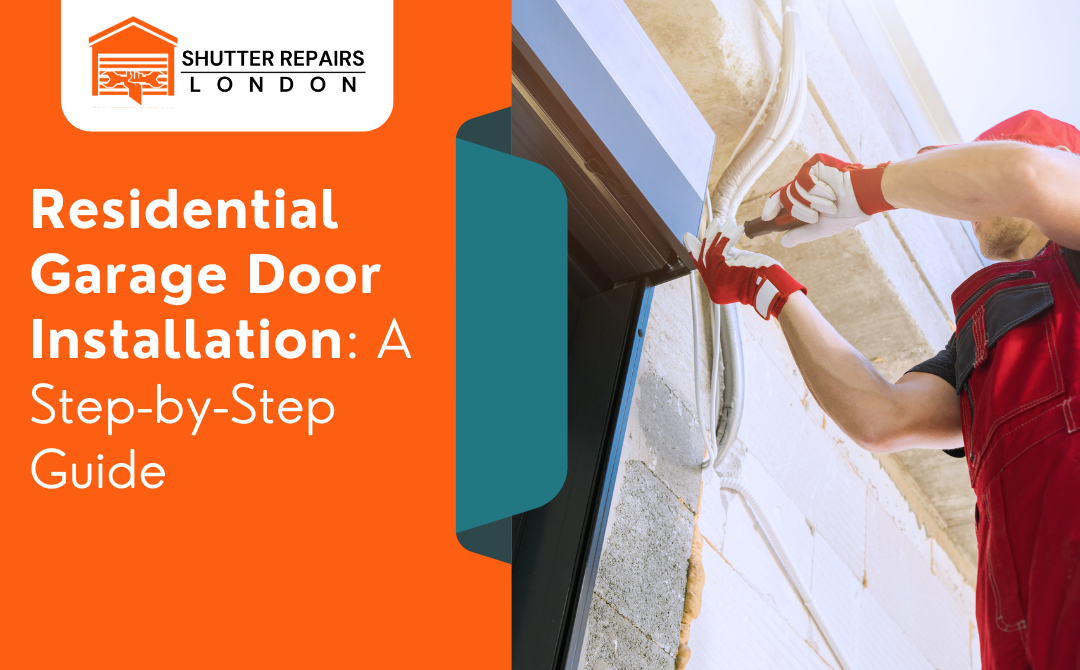Garage doors in homes are essential for security, convenience, and enhancing curb appeal. Installing a residential garage door might seem challenging, but it can be a straightforward process with the right guidance. Understanding the importance of a properly installed garage door is paramount for aesthetics, safety, and energy efficiency.
Today, we’ll walk you through installing a residential garage door step by step. You’ll learn everything, from choosing the door to the installation process.
What Should You Consider Before Installing a New Garage Door?
Below are some factors to consider before installing a residential garage door:
- Residential Garage Door Types: It is crucial to explore the wide range of garage door types. Sectional, timber and side-hinged garage doors offer unique benefits.
- Material Quality: Opt for high-quality materials to ensure longevity and resilience under harsh weather conditions.
- Thermal Insulation: Consider doors with good thermal insulation to reduce heat loss and save on energy costs.
- Aesthetic Appeal: Choose a door that complements your home’s architecture. Glass options and premium quality finishes can enhance the visual appeal.
- Professional Installation: Employ a residential garage door service for installation to guarantee it’s done right, enhancing safety and efficiency.
Steps for Installing Residential Garage Door


Below is the step-by-step guide for installing:
Step 1: Measure and Prepare
To determine the garage door size needed before any installation, accurately measure the space. This step is crucial to ensure the residential garage door fits perfectly, preventing future opening mechanisms or heat loss issues. Ensure that the area is clear of obstructions and that the frame is level and ready.
Step 2: Assemble the Tracks
Install both horizontal tracks and vertical track components that will guide the garage door as it opens and closes. It’s important to use high-quality materials for the tracks to ensure smooth operation and longevity. Double-check all measurements and alignments to avoid any operational issues later.
Step 3: Install the Panels
Begin with the lowest section of the door and attach it to the track. For sectional garage doors, each panel should be secured before adding the next. Ensure seals are tight between panels to optimize thermal insulation and prevent drafts, enhancing the door’s energy efficiency.
Step 4: Attach the Springs and Cables
Install the spring system, which is essential for balancing the weight of the garage door, making it easier to open and close. The cables should be attached securely to the springs and the door to handle the tension and movement safely. Proper installation of springs and cables reduces the risk for future garage door repair.
Step 5: Install the Garage Door Opener
Mount the garage door opener to control the door’s movement automatically. Ensure it is aligned correctly with the type of garage door you have installed, whether it’s a heavy timber garage door or a lighter sectional door. This step is crucial for adding convenience and enhancing the usability of the residential garage door.
Step 6: Final Testing and Adjustments
After installation, thoroughly test the door multiple times to ensure it moves smoothly along the tracks and that the garage door opener functions correctly. If necessary, adjust the tension and alignment. This step ensures that the door operates safely and efficiently and is prepared to withstand various weather conditions and extensive use.
Summing It!
Installing a new residential garage door is a significant investment that enhances your home’s security, aesthetics, and energy efficiency. From sleek sectional doors to robust timber options, the choices are extensive but crucial for optimal performance and durability.
At Shutter Repairs London, we pride ourselves on providing expert residential garage door replacement and installation services, ensuring every project meets our high quality and customer satisfaction standards.
As you consider upgrading your garage door, remember the long-term benefits of choosing the right type and professional installation. Contact us today to explore how we can elevate your home’s functionality and curb appeal!
FAQs: Frequently Asked Questions
1. What is the best material for a residential garage door?
The best material depends on your needs for durability, insulation, and aesthetics. Steel, timber, and aluminium are popular choices.
2. Can I install a garage door myself?
While it’s possible, professional installation is recommended to ensure safety and correct operation.
3. How often should a garage door be replaced?
Depending on material and maintenance, garage doors typically last 15-30 years.
4. What are the signs that I need a new garage door?
Difficulty in operation, frequent repairs, and visible wear are common indicators.
5. How can I improve the insulation of my garage door?
Consider doors with built-in insulation or add an insulation kit to an existing door.
6. Does a new garage door come with a warranty?
Yes, most new doors come with a manufacturer’s warranty; details vary by brand.





